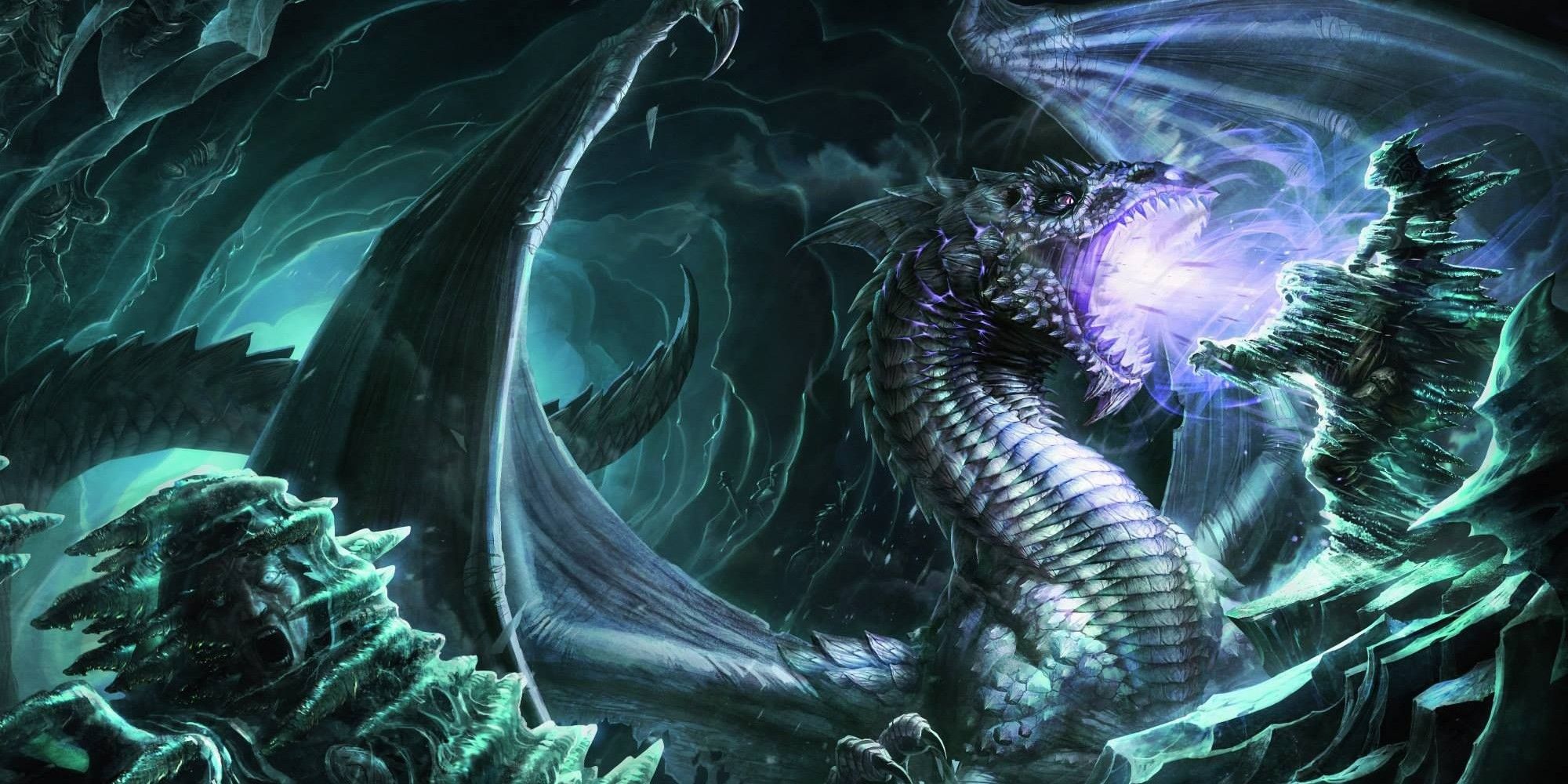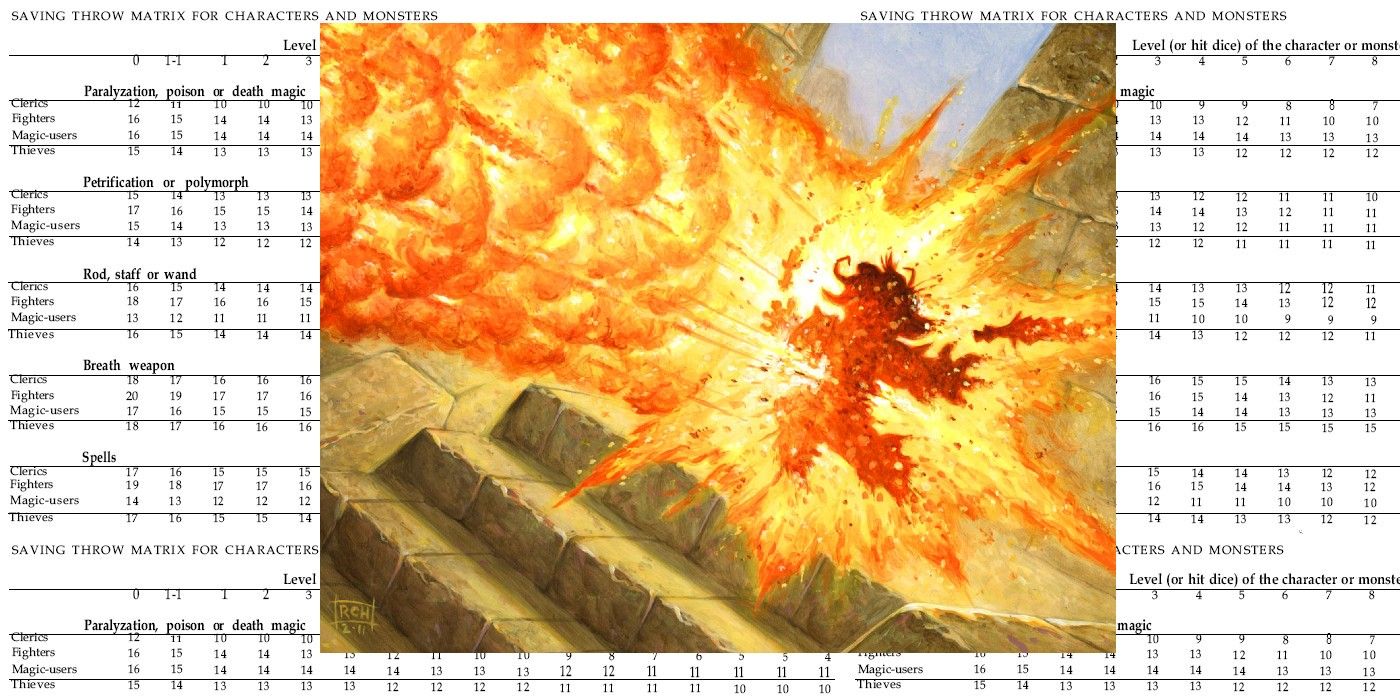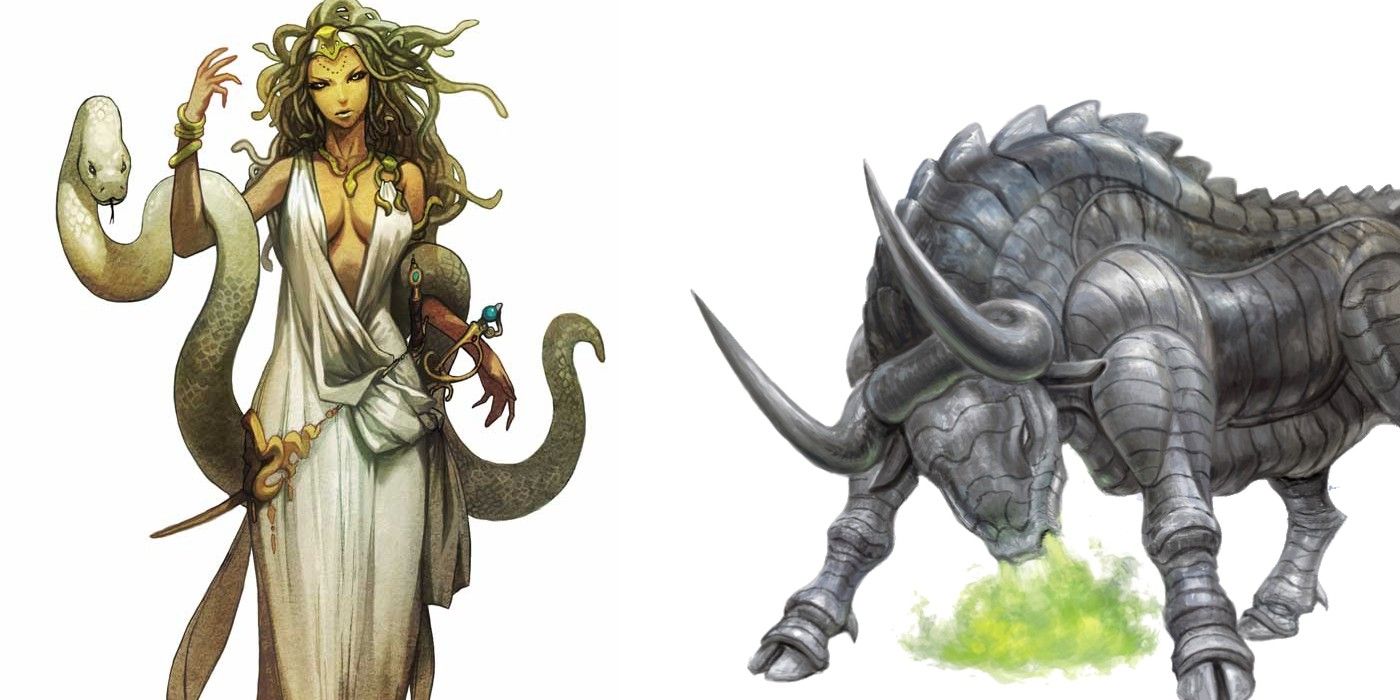The saving throw mechanic is one of the iconic rules of Dungeons & Dragons, and saving throws remain as vital as ever in the current fifth edition of the game. Where basic weapon attacks are determined by comparing a modified attack roll against a target’s Armor Class, saving throws are rolled by the defender and dictate whether characters can resist spells, traps, and other hazards.
Early versions of D&D had numerous save types, with class-specific tables for improvements to categories like "Petrification or Polymorph" and "Paralyzation, Poison or Death Magic." The third edition of D&D simplified saves into three types: Reflex saves, aided by Dexterity and relating to dodging effects; Fortitude saves, aided by Constitution and relating to resisting effects through physical hardiness; and Will saves, aided by Wisdom and relating to resisting effects through mental tenacity.
D&D’s fourth edition kept the Fortitude, Reflex, and Will categories but expanded the base stats that could add to them, with the option of the higher of two stats for each: Strength or Constitution for Fortitude, Dexterity or Intelligence for Reflex, and Wisdom or Charisma for Will. The current edition features a unique saving throw system, with each of D&D's six base stats now having its own separate saving throw value.
D&D Saving Throws Are Simpler Now, But Still Crucial
Every class in D&D now begins with proficiency in two of the six abilities’ related saving throws, scaling from a +2 bonus at level one to +6 at higher levels. With the tighter range of numbers used in modern D&D, every point counts. All saves are not equally useful in D&D, and the stats that improved third edition saves happen to be the most valuable saving throw proficiencies in 5e. Close to a third of D&D 5e's spells and monster abilities are resisted with Dexterity saving throws, with Wisdom and Constitution coming in next at close to 25% each. The other three stats, Strength, Intelligence, and Charisma, each resist less than 10% of the game’s spells and monster powers, making them less valuable. Every class is proficient in one of the "good" saves and one of the low-value saves.
Saving throws are just as important as Armor Class, if not more so. While the majority of Dexterity-based saving throws deal with avoiding damaging effects, like Lightning Bolt spells or a dragon’s breath weapon, Wisdom and Constitution-based saves often avoid effects that could prevent a character from acting (like the Hold Person spell), monster abilities like petrification, or other effects that significantly impact their effectiveness, like the Blindness and Confusion spells. For this reason, while Dexterity might be the most-often-rolled save type, Wisdom and Constitution saves are arguably more valuable, as failing one could make a bigger difference in many encounters.
Monster Special Abilities Require Saving Throws In D&D
Constitution saves are of special concern for spellcasters, as the Concentration mechanic requires casters to make a successful Constitution saving throw to maintain many spells when they take damage. Spellcasters who begin with Constitution as a trained saving throw, like Sorcerers and Artificers, therefore have a significant advantage. Any character can take D&D's Resilient feat once to add a third proficient saving throw, however, which is a wise choice for many builds (though it will provide more noticeable benefits at higher levels, when the proficiency bonus grows beyond the initial +2).
Other classes have additional methods to improve their saving throws or those of their party members. Single-classed Monk characters in high-level games should forego the Resilient feat, as the level-14 Monk ability Diamond Soul grants them proficiency with all six ability saving throws. A Paladin’s level-six Aura Of Protection feature allows them and nearby allies to add the Paladin’s Charisma bonus to all saving throws; a 20-Charisma Paladin offering a +5 bonus to saves is close to the +6 proficiency bonus for high-level characters, so staying in tight formation provides much better odds of succeeding at these rolls. Every Dungeons & Dragons player should consider saving throws when building their characters, as they are just as important to survival as Hit Points and Armor Class, especially in games where the Dungeon Master includes a large number of enemy spellcasters.



